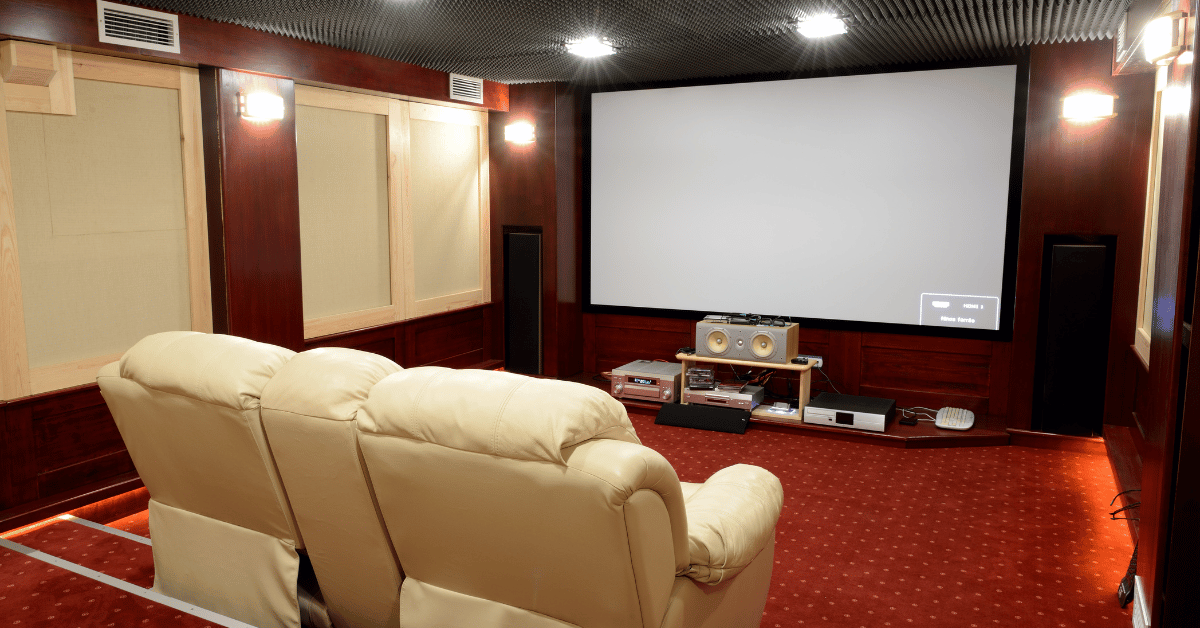Building a home theater room is a dream for many movie and entertainment enthusiasts. Creating a space that provides the ultimate cinematic experience right in your own home can be an incredibly satisfying and enjoyable project. However, the process of building a home theater room can be overwhelming if you don’t know where to start. From selecting the right space to designing the layout and choosing the right equipment, there are many factors to consider. In this guide, we’ll walk you through the process of building a home theater room, step-by-step.
Table of Contents
How To Build A Home Theater Room?
Building a home theater room is an exciting project that requires careful planning and consideration. A dedicated home theater room can provide the ultimate entertainment experience, with the ability to watch your favorite movies and shows in a space that is specifically designed for that purpose. In this guide, we’ll walk you through the steps to build a home theater room that meets your needs and budget.
Step 1: Select the Right Space
The first step to building a home theater room is to select the right space. Look for a room that is large enough to accommodate your desired screen size and seating arrangement, and ideally, a room with no windows or minimal natural light. The basement or attic can be good options for a home theater room.
Step 2: Determine the Layout
Once you have selected the room, it’s time to determine the layout. Consider the optimal viewing distance, the number of seats you want to include, and the placement of the screen and speakers. You may want to consult with a professional home theater installer or designer to ensure that the layout is optimized for the best possible viewing experience.
Step 3: Install the Wiring and Electrical
Proper wiring and electrical installation are crucial for a high-quality home theater experience. You’ll need to run wiring for your speakers and any other components, such as a projector or screen. It’s essential to ensure that the wiring is hidden from view to maintain a clean and professional look.
Step 4: Choose the Right Equipment
Choosing the right equipment is critical to the success of your home theater room. Consider factors such as screen size, projector or TV quality, sound system, and seating options. Be sure to select equipment that fits your budget while still providing the high-quality experience you desire.
Step 5: Install the Audio and Video System
Once you have selected your equipment, it’s time to install the audio and video system. This may involve mounting the screen, setting up the projector, and connecting all of the components. Be sure to follow the manufacturer’s instructions carefully and consider hiring a professional installer if you’re unsure of how to do it yourself.
Step 6: Add Comfortable Seating and Decor
The final step is to add comfortable seating and decor to your home theater room. Consider adding plush recliners or a comfortable sectional sofa. You can also add theater-style decor, such as movie posters or a popcorn machine, to complete the experience.
Building a home theater room can be a fun and rewarding project that provides years of entertainment for you and your family. By following these steps, you can create a space that is optimized for the ultimate cinematic experience.
What is a good size for a home theater room?
When it comes to building a home theater room, the size of the room is an important factor to consider. A good size for a home theater room depends on various factors such as the number of viewers, the screen size, and the seating distance. Ideally, a home theater room should be large enough to accommodate the seating arrangement, sound system, and screen size.
A general rule of thumb for home theater room size is to have a room with a length-to-width ratio of 2:1. For example, a room that is 20 feet long and 10 feet wide would be a good size for a home theater room. This allows for ample space for seating and placement of the screen and sound system.
The distance between the screen and seating is also a crucial factor to consider. The size of the screen should be appropriate for the distance between the screen and seating. A good rule of thumb is to have a viewing distance that is 1.5 to 2 times the diagonal screen size. For example, if the screen diagonal size is 120 inches, the optimal viewing distance would be between 15 and 20 feet.
Overall, the size of the home theater room should be large enough to accommodate the desired seating arrangement and screen size while allowing for appropriate viewing distance. It is also important to consider acoustic treatments, lighting, and other factors that can impact the overall viewing experience.
Conclusion
In conclusion, building a home theater room can be an exciting project for any movie or TV enthusiast. To get started, it’s important to consider the size and layout of the room, the projector and screen options, the sound system, and any additional furnishings or décor. With the right planning and attention to detail, it’s possible to create a space that not only looks great but provides a truly immersive and enjoyable entertainment experience. Whether it’s a dedicated theater room or a multi-purpose media room, the key is to make it your own and enjoy the results for years to come.

